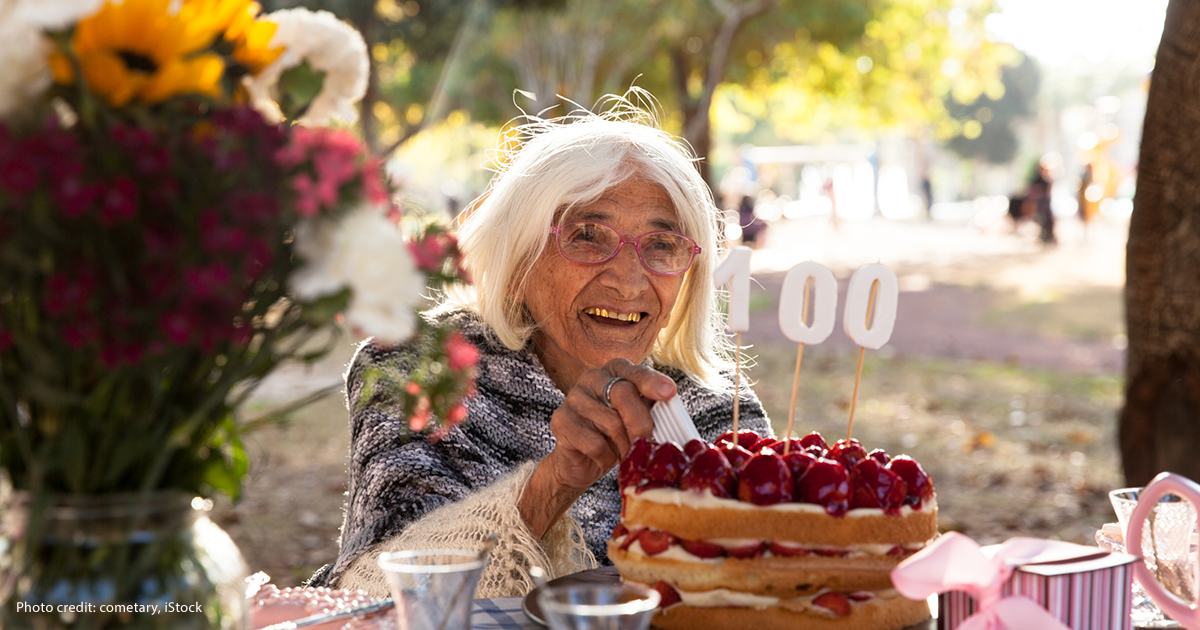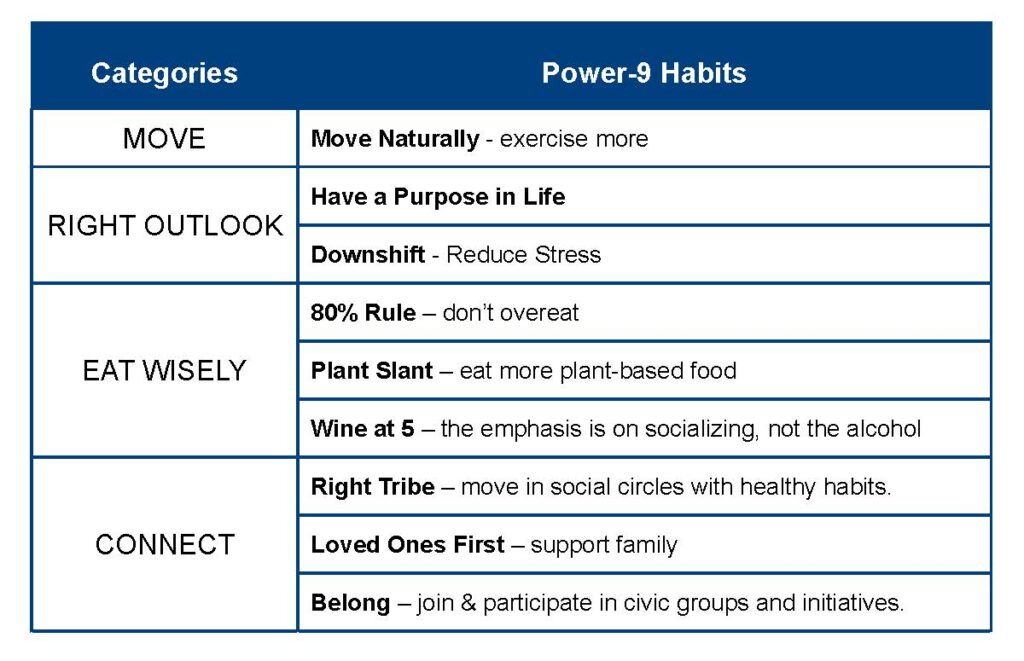
Jan 09, 2024 The Blue Zones, Well-being, and Feel Better
Multiple media reports have been published on five “Blue Zones” – areas with relatively high numbers of people living to be 100 years old or older. In addition, these centenarians have lower rates of dementia and enjoy good health. Are there genetic or environmental traits that lead to healthy aging observed in the identified Blue Zones?
Why are Areas of Healthy Aging termed Blue Zones?
The term “Blue Zone” reportedly owes its existence to a 2004 study of human longevity in Sardinia by Michel Poulain and colleagues. The authors used a blue pen to circle communities of exceptional longevity on the island. This led to Dan Buettner, a National Geographic Explorer, Fellow, and journalist, calling areas of exceptional longevity “Blue Zones.” Blues Zones are briefly defined as “communities where people not only lived longer but also enjoyed a high quality of life in their old age.”
After the initial 2004 Sardinia report, additional blue zone locations were identified. In 2005, Dan Buettner nominated Loma Linda in California, where almost 40% of the population are members of the Seventh Day Adventist church, as a blue zone. In 2013, Michel Poulain and his colleagues published a report identifying three additional blue zones: Okinawa in Japan, the Nicoyan peninsula in Costa Rica, and the Greek island of Ikaria.
Criticisms of the Blue Zone Concept
In the last few years, a flurry of media stories questioning the evidence supporting the Blue Zones has appeared. Many of these reports reference criticisms by Saul Newman, an Australian demographer. Newman notes that a critical feature of the Blue Zones is a lack of good birth and life cycle registries. For example, the absence of good vital registration statistics strongly predicts exceptional human longevity in America. He also demonstrates that, in the United Kingdom, Italy, and France, regional poverty, material deprivation, and high crime rates predict communities with people who have very long lives. For example, the Tower Hamlets borough in London has the most supercentenarians (people older than 110 years) per capita in London. However, the community also has the highest poverty rate, the shortest disability-free life expectancy, and the worst index of multiple deprivation in all 32 London boroughs.
There are other problematic issues. In 2023, Luis Rosero-Bixby, who originally nominated the Nicoya peninsula in northwestern Costa Rica as a Blue Zone, reported that the peninsula is no longer a Blue Zone. While Nicoyan males born in 1905 had 33% lower mortality rates than other Costa Rican males, those born in 1945 had 10% higher rates. This finding illustrates one of the challenges of demographic research. Findings that may have been true in 1905 may no longer be accurate. In addition, validating claimed ages is often difficult because of poor state registration systems and lost or misplaced paperwork for people claiming to have lived for 100 years or longer.
Positive Outcomes from the Blue Zone Concept
In 2003, Dan Buettner incorporated Blue Zones LLC, a limited liability company in Minnesota, and trademarked the Blue Zones name. The company has promoted a formula to cities and communities in the US that encourages health, happiness, and longevity based on nine habits. The habits include behavioral traits distilled from the lives of the centenarians and supercentenarians in each of the five blue zones. The nine habits are called the Power-9 by the Blue Zones LLC (see text of Buettner’s July 30, 2014 presentation at a National Academy of Sciences workshop) and are listed in the table below.

The Power-9 habits include many that public health officials have already promoted. However, packaging the nine selected habits into a holistic lifestyle may provide synergistic effects, encouraging individuals to make better life decisions and leading to greater individual health and people feeling better and more fulfilled.
The community of Albert Lea in Minnesota (population – 18,000) south of the Twin Cities was the first place where the Power-9 system was applied. In 2016, the town became the first in the country to be certified as a Blue Zones community. Reportedly, the incidences of tobacco use, high blood pressure, and high cholesterol have declined, and the town has added almost 13 miles of new sidewalks and trails. At the same time, overall well-being and sense of purpose have risen. However, applying the Power-9 principles requires a community ready to make the changes, and it takes 3-5 years or longer to observe results.
Going to Scale
In 2020, Blue Zones LLC was acquired by Adventist Health, a health provider with over $9 billion in annual revenue. Adventist Health followed this acquisition by announcing the construction of a health and well-being center in Miami that would promote behaviors leading to a long, healthy, and happy life, as advocated by Blue Zones LLC. Sharecare, a digital health company that helps people centralize their health data, is administering its Community Well-Being Index survey in all 57 Blue Zone project communities in the US to track the resulting impact and medical cost savings. For example, Buettner reports that Fort Worth, Texas, a Blue Zone city for the past five years, has saved an estimated $250 million yearly in projected healthcare costs and productivity improvements.
Conclusion
Despite the various criticisms of the data supporting the five Blue Zone regions and the relatively limited published data on the impact of Blue Zone policy implementation in the US, Blue Zone behavioral recommendations will likely influence the lives of many Americans in the coming years. A healthy well-being framework, such as the Power-9, will inevitably increase the awareness of what individuals can do for themselves and their families to improve their well-being and that of their communities and our world. Furthermore, the healthcare savings reported for Fort Worth and other Blue Zone communities are sufficiently eye-catching that Power-9 policies are likely to spread rapidly across the country.
One of WellBeing International’s initial campaigns, the Feel Better project, supported by the Pettus Crowe Foundation, promotes the idea of individuals feeling better by developing habits leading to environmental well-being and global sustainability. WBI is very enthusiastic about the potential of the Power-9 approach and plans to track reports of developments in communities that are implementing the Blue Zones LLC formula for improved well-being and health.


